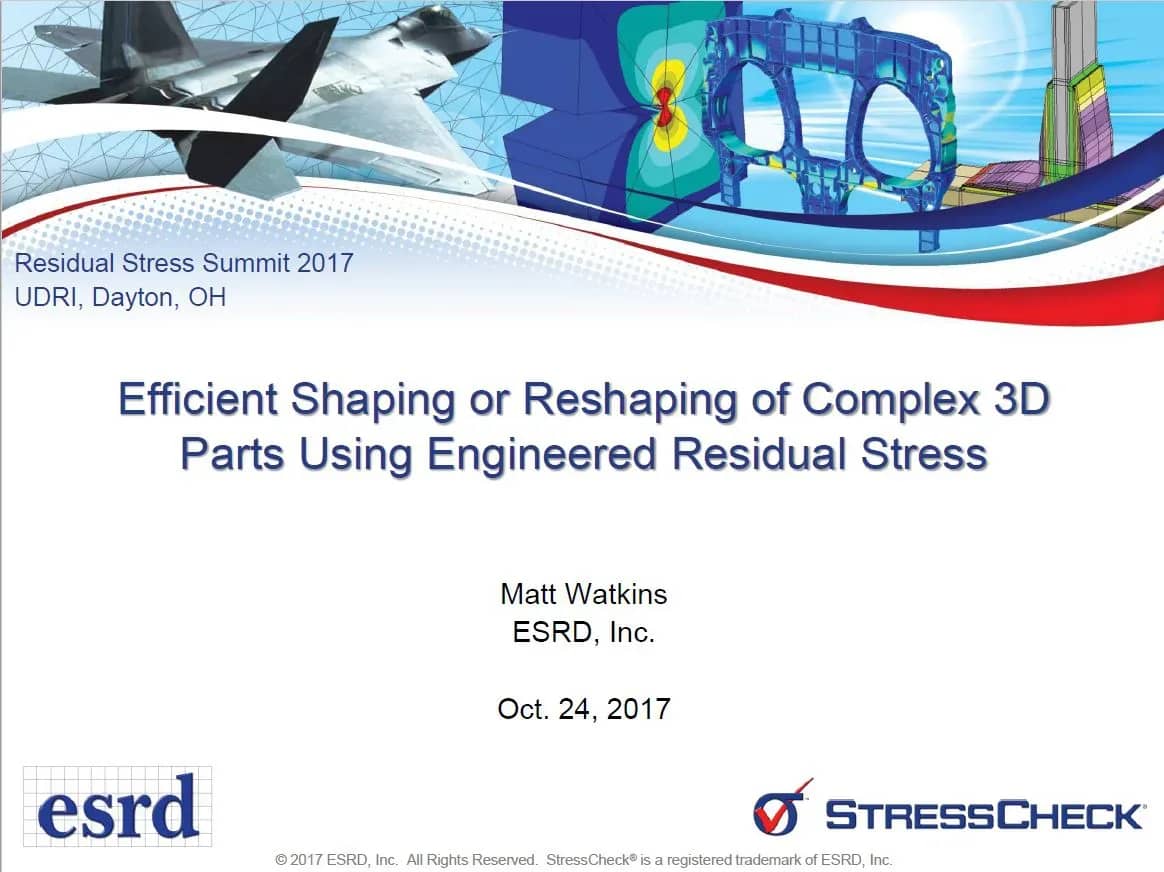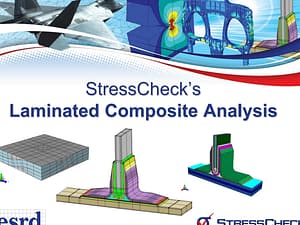Efficient Shaping or Reshaping of Complex 3D Parts Using Engineered Residual Stress
Abstract: A model was developed for solving the inverse problem of distortion.
- Significant improvement in overall shape of the validation part was observed.
- Demonstrated good predictive performance for the inverse problem of reshaping.
- The extreme distortion in a partially-peened state was predictable.
- The difference between the predicted final shape and the actual final shape was less than the difference between the actual final shape and the target shape.
- Demonstrated good predictive performance for the forward problem of reshaping.
Originally presented at the Residual Stress Summit 2017 in Dayton, OH.
 Serving the Numerical Simulation community since 1989
Serving the Numerical Simulation community since 1989 





